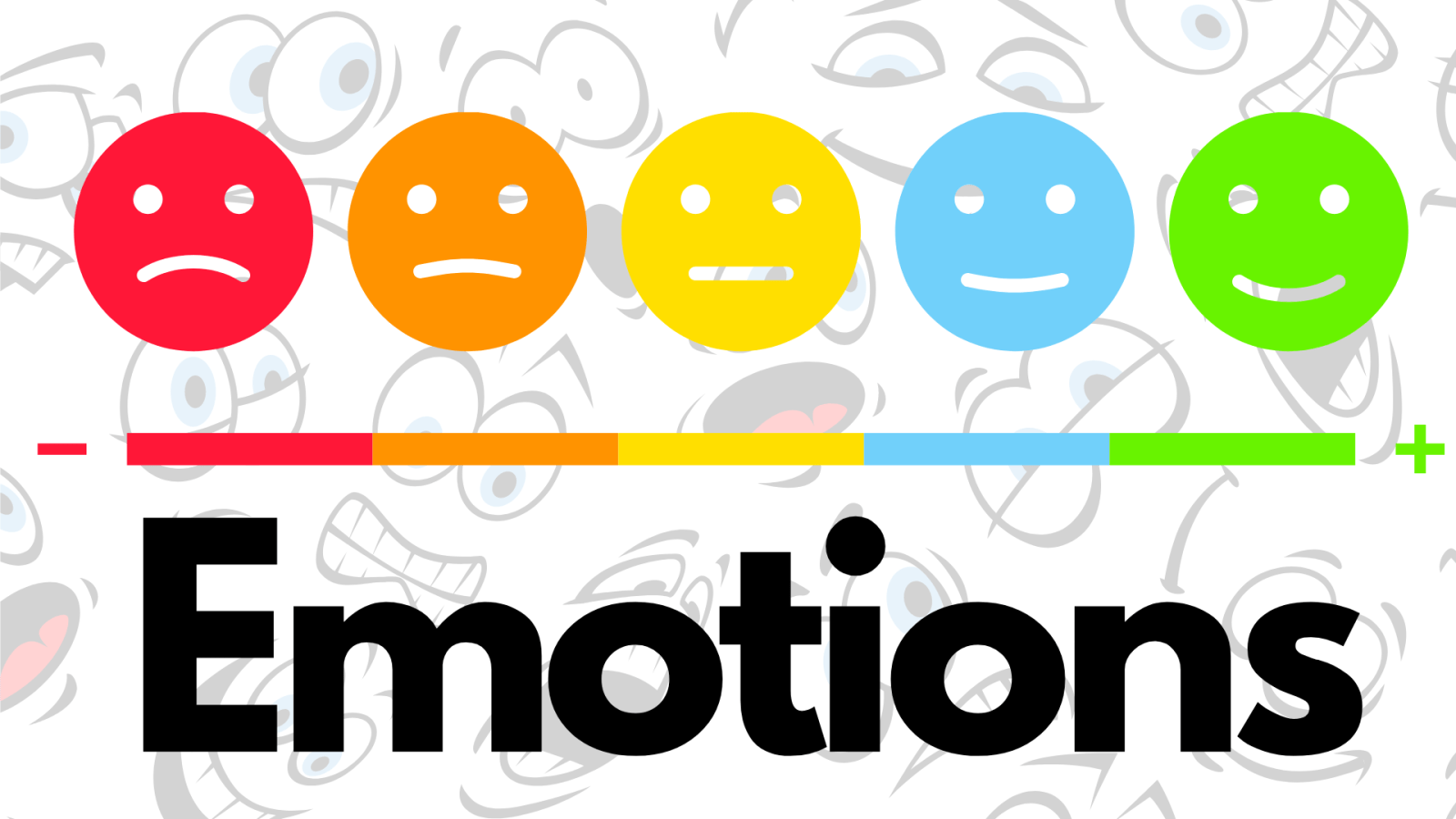You’ve probably discovered this proverb by listening to depressing music when depressed or by talking to close friends or family when furious or unhappy.
It’s possible for things to go both ways. When you’re enjoying a terrific day, listening to a somber tune may swiftly alter your mood. When a buddy confides in you about their problems, you could feel sad or distressed if you’re the one lending a listening ear.
What causes this to occur? Does the propagation of emotions resemble that of the cold or the flu?
In reality, absolutely. Scientists refer to it as emotional contagion. It occurs when you unintentionally copy the feelings and facial expressions of others around you.
Why does this occur?
Contemporary neuroscience
The mirror neuron system is one theory put forth by Trusted Source for this phenomenon.
Researchers studying monkey brains found that some neurons start firing when the animal does something and when another monkey does the same thing. This discovery led to the development of the theory of mirror neurons.
It appears that people could experience a similar process. According to some academics, the mirror neuron system goes beyond physical movements and might help to explain how we feel empathy for other people.
How does that work?
According to experts who have studied emotional contagion, the process typically involves three steps: mimicry, feedback, and contagion (experience).
Mimicry
You must first be able to identify an emotion in order to duplicate it. You might not always be aware of this knowledge, since emotional signs are frequently subdued.
Mimicry typically takes place through body language. For instance, you can start unintentionally imitating your friend’s position, gestures, or facial expressions when you’re conversing with them.
Your facial expression may soften if you were initially anxious or distressed, but your friend’s face appears open and relaxed.
Mimicry is an important part of social interaction since it may help you relate to others by understanding their experiences. But it’s only one aspect of the emotional contagion process.
Feedback
You start to feel an emotion by imitating it. Your calm demeanor in the aforementioned scenario may have helped you feel more at ease.
A psychologist in Washington, D.C., named Dr. Maury Joseph says that this can also occur with deeper-seated emotional experiences and emotions, including depression.
When someone is depressed, for instance, their emotions may also be communicated through their body language, voice, or facial expressions. Those who are more susceptible to these signs may experience a comparable emotional response, they say.
Contagion
When you mimic an emotion, you usually feel that emotion yourself, whereupon it becomes a part of your own experience. Once you start communicating it or relating it to others in a similar manner, the contagion process is complete.
Advice for being optimistic
There are times when emotional contagion is beneficial. Who wouldn’t want to spread joy? However, there is a drawback: Unfavorable feelings may spread just as quickly.
Everyone is susceptible to emotional contagion, according to Joseph. However, it is possible to be aware of unpleasant feelings and show support for others around you without becoming affected by them. How? Read on.
Do your best to surround yourself with cheerful things.
If you surround yourself with things that make you happy, you’ll be less inclined to give in to someone else’s negative attitude. Make your workplace or workstation a “happy space” for yourself if you usually deal with negativity at work.
Here are some suggestions:
If your employer allows it, bring in plants or even fish.
Display pictures of your family, friends, pets, and/or partners in your place of employment.
While working, put on headphones and listen to your favorite podcasts or music.
Even if you start to feel like you have a serious case of pessimism, your surroundings could make you feel better.
Offer positivity
Try turning the tables by grinning and trying to keep your voice upbeat if you don’t want another person’s negativity to impact you. You might feel less inclined to smile if you’re already beginning to experience the negative effects of someone’s poor mood, but you should still try it.
Smiling may make you feel happier, but it might also be a win-win situation if the other person copies your body language and picks up on your attitude.
Recognize the situation
You might not immediately be aware of whether you’re picking up on someone else’s emotions. You could simply feel lousy without knowing why.
It might take a lot of self-awareness, according to Joseph, to notice that the actions of another person are upsetting you. It may be simpler to confront your sentiments without acting on them if you understand how they connect to another person’s experience.
You can try distancing yourself from a situation if you can recognize when someone else’s bad mood is impacting you.
Laugh a lot.
Laughing may uplift your spirits and reduce stress. Additionally, it could spread to others around them.
When you feel negative, watch a funny video, tell a joke, or share a positive one to boost positivity.
Do not personalize it
Empathy is related to emotional contagion. You may unconsciously respond to someone you care about who is going through emotional difficulty by taking on their experience and empathizing with them. Being human entails some limitations.
Try to remember that:
You have no control over how they feel.
They are sharing their story in the only manner they can, since you might not be able to support them monetarily or with other resources.
If a loved one is coping with a persistent mental health issue, such as depression, this can be very difficult. If you’re not feeling well, you can’t really help them either. Additionally, it’s never a terrible idea to suggest that they speak with a therapist.
As many therapists deal with partners and family members of persons suffering from mental health concerns, you might also think about getting assistance for yourself.
The conclusion
People often show how they feel without saying it verbally by using body language and other subtle indicators. The drawback to this is that unfavorable feelings can spread, particularly through social media and work contexts.
Although there is no vaccine to stop emotional contagion, you can prevent it from pulling you down.
Editor and writer Crystal Raypole previously worked for GoodTherapy. Asian languages and literature, Japanese translation, food, the natural sciences, sex positivity, and mental health are some of her areas of interest. She is especially dedicated to serving in the reduction of stigma associated with mental health disorders.
Previously seen by a doctor on December 11, 2019
Healthline adheres to stringent source standards and depends on peer-reviewed studies, scholarly research organizations, and medical societies for their articles. Tertiary allusions are steered clear of. Read our editorial policy to find out more about how we make sure our information is correct and up to date.
JA Bastiaansen and others (2009). There is proof that emotions have mirror systems. DOI: \s10.1098/rstb.2009.0058
H. Clements and others (2019). A thorough evaluation of the impacts of aquarium fish interaction on human health and wellbeing. DOI: \s10.1371/journal.pone.0220524
JI Davis et al (2009). How does emotional experience become modulated by facial feedback? DOI: \s10.1016/j.jrp.2009.06.005
T. Eerola et al (2016). Unfamiliar sorrowful music can move you, and it is linked to great empathy. DOI: \s10.3389/fpsyg.2016.01176
E. Ferrara et al (2015). measuring the spread of emotion through social media. DOI: \s10.1371/journal.pone.0142390
R. Firmalino (2011). Why it is contagious to laugh.
greatergood.berkeley.edu/article/item/why laughter is contagious
Mr Joseph (2019). Personal conversation
Jm Kilner et al (2013). What is now understood about mirror neurons. DOI: \s10.1016/j.cub.2013.10.051
ADI Kramer and others (2014). Large-scale emotional contagion through social networks is experimentally supported. DOI:
10.1073/pnas.1320040111
MRESS J (2012). Does empathy come from mirror neurons?
greatergood.berkeley.edu/article/item/do mirror neurons give empathy
W. Nakahashi and others (2015). At what points is emotional contagion useful? DOI: \s10.1016/j.jtbi.2015.06.014
E. Prochazkova and others (2017). A neurocognitive model of emotional contagion says that mimicking may link minds and spread emotions. DOI: \s10.1016/j.neubiorev.2017.05.013
Bm Savage and others (2017). Humor giggles, education, and health! A quick recap DOI: \s10.1152/advan.00030.2017
J. Schulz (2017). Find out what science and study have to say about the transmission of emotions.
canr.msu.edu/news/emotions are contagious, learn what science and research have to say about it.
Our specialists closely follow the health and wellness sector, and as fresh material is made available, we update our articles.







